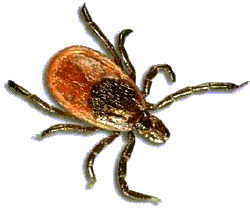Objective
Lyme disease, being
a spirochete with pathology similar to syphilis, is often found difficult
to treat due to the spirochete invading sanctuary sites and displaying pleomorphic
characteristics such as a cyst (L-form). Because a significant portion of
sexually active couples present to my office with Lyme disease, with only
one partner having a history of tick exposure, the question of possible
secondary (sexual) vector of transmission for the spirochete warrants inquiry.
Additionally, sexually active couples seem to have a marked propensity for
antibiotic failure raising the question of sexually active couples re-infecting
themselves through intimate contact.
Methods
Lyme spirochetes/DNA have been recovered from stored animal semen. Recovery
of spirochete DNA from nursing mother's breast milk and umbilical cord
blood by PCR (confirmed by culture/microscopy), have been found in samples
provided to my office.
Results
Surprisingly, initial laboratory testing of semen samples provided by
male Lyme patients (positive by western blot/PCR in blood) and the male
sexual partner of a Lyme infected female patient were positive approximately
40% of the time. PCR recovery of Lyme DNA nucleotide sequences with microscopic
confirmation of semen samples yielded positive results in 14/32 Lyme patients
(13 male semen samples and 1 vaginal pap).
ALL positive semen/vaginal
samples in patients with known sexual partners resulted in positive Lyme
titers/PCR in their sexual partners. 3/4 positive semen patients had no
or unknown sexual partners to be tested.
These preliminary findings
warrant further study. Current a statistical design study to evaluate
the possibility of sexual transition of the spirochete is being undertaken.
Our laboratory studies confirm the existence of Lyme spirochetes in semen/vaginal
secretions. Whether or not further clinical studies with a larger statistical
group will support the hypothesis of sexual transmission remains to be
seen.
A retrospective clinical
study is also underway. We are reviewing the medical records, collecting
semen samples of patients who were previously diagnosed with current and
previously treated Lyme disease are being asked to provide semen,pap and
blood samples for extensive laboratory testing.
Conclusion
With the initially impressive data, we feel the subsequent statistical
study on the sexual transmission of the Lyme spirochete will illuminate
a much broader spectrum of public health concerns associated with the
disease than the originally accepted tick borne vector.
|
